Import and manufacturing services for companies
Bull Importer is a company offering a wide range of import management and outsourced manufacturing services that enable companies to source their products through OEM and ODM developments in any country in the world in a convenient, efficient and secure manner.
We offer everything from comprehensive solutions to solutions to specific situations where there is no way forward.
If you have a custom-made product or prototype defined, we can manage the entire process from zero to delivery to your door through our Import or Outsourcing services company.
If you just need us to help you solve a particular problem, such as a cargo held up in customs or delays in product manufacturing service deadlines, please refer to our Stage Management service.
If you are looking for an existing product on the market that you want to market under your brand, you can contract our supplier search service and obtain the price of this product with all the actual manufacturing and import costs included to your establishment or to your nearest seaport or airport.
If you have an offer from a manufacturer in China, India or another country, but you have no way of knowing the quality of the manufacturing service, meeting the regulations or within the promised deadlines, our import service company includes the possibility of contracting our inspection and quality control services.
If you are wondering whether a company’s in-house manufacturing service is legitimate, our import and manufacturing services company has a Supplier Verification and Registration service to answer your questions.
If you want to visit the factory personally and see the manufacturing system with your own eyes or perhaps you are interested in attending a trade fair, but you do not know the language and negotiation methods in Asia, in our import and manufacturing services company you can hire the service of agendas and accompaniment on your trip, where we accompany you at all times and advise you on your business contacts.
If you belong to a purchasing association and you want all your associates to benefit from better manufacturing and import prices, in our company we have a Group Import service for associations from different sectors that have grouped together to improve the prices of their purchases.
Bull Importer is a company that has been providing import and manufacturing services for companies in all kinds of sectors since 1991. We ensure not only the beginning of the management, but we extend the scope of our services in each and every one of the phases that may be involved in the management of import and manufacturing in China, India and other countries, both standard products and those with a custom manufacturing. We have in-depth knowledge of the industry and trade in the countries we work with and we have experienced native staff to ensure absolute security, discretion and efficiency in the development of import and manufacturing services for companies.
Total funding
For 100% of the import cost including our management, 120 days subject to our approval. You will not get these conditions on your own.
Full protection
Insurance coverage of the operation for 100% of the import costs. If any unforeseen event occurs with the cargo, you are protected.
Single invoice
All operations on a single invoice in euros, detailed and transparent. You won’t have to worry about paying each of the procedures and transactions individually, and you’ll save accounting complications due to currency changes.
Security without headaches
We verify the supplier, perform quality controls, thoroughly inspect the merchandise at the source to ensure compliance with agreements, and ensure it arrives at your warehouse on schedule and without incidents.
Public liability insurance
For the imported product: you will be protected against damages caused to third parties, whether they are employees who must handle it at work or end users who suffer an accident with the product at home. The insurance covers all damages caused initially, up to the product’s withdrawal.
Up-to-date information
Obtained from sectoral fairs and exhibitions held in Asia, where we come into contact with suppliers and manufacturers that meet the requirements demanded by European clientele.
Business solvency
Acquired through the management of imports and outsourcing of manufacturing products and components for Spanish companies since 1991.
Discretion
No one will know where and how the parts and items used in your industry are produced or marketed under contract.
Globalization of suppliers
We seek the product that fits the importer’s needs at the best possible cost anywhere in the world. In Asia, in emerging American markets, in Africa, or wherever the product may be found.
No intermediaries
Any extra costs generated by intermediaries disappear. The operations are clear, and the importer is always informed of what is being done.
Most requested services
Do you have any questions?
Contact us


